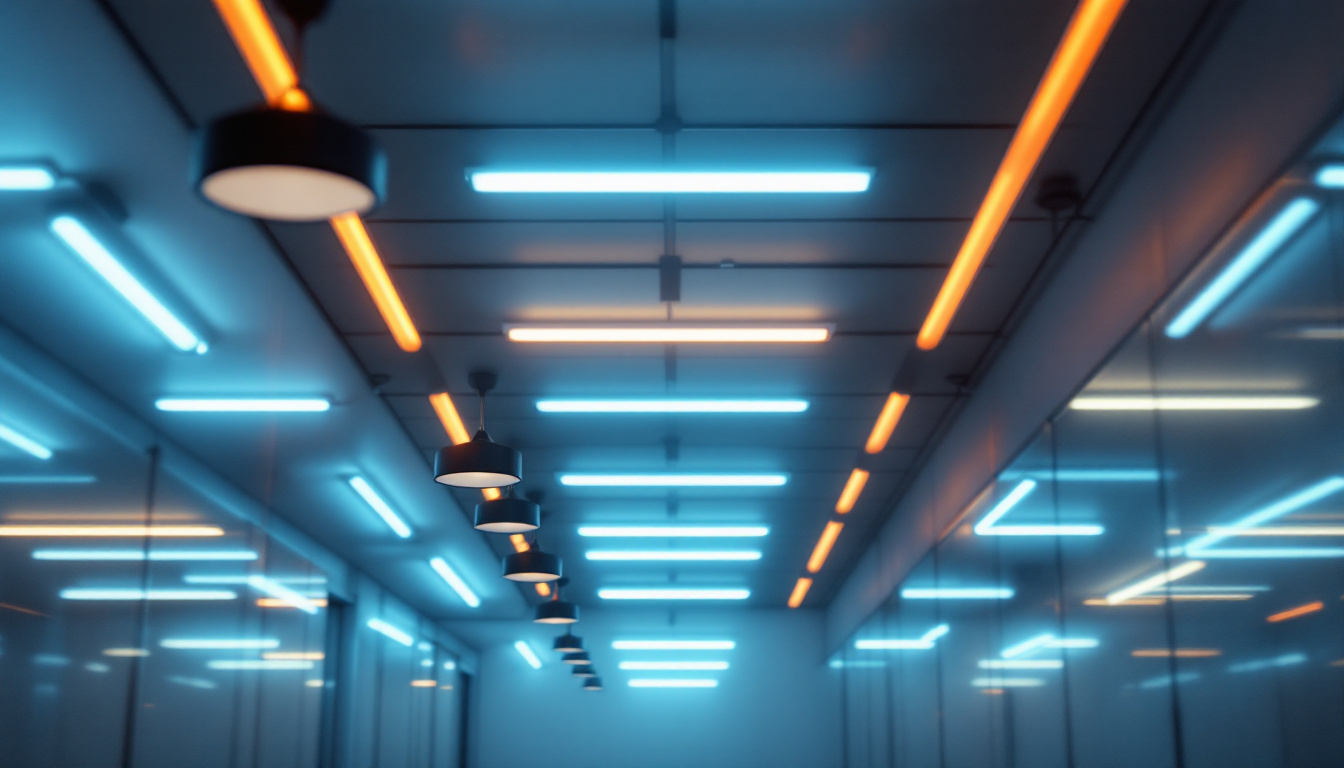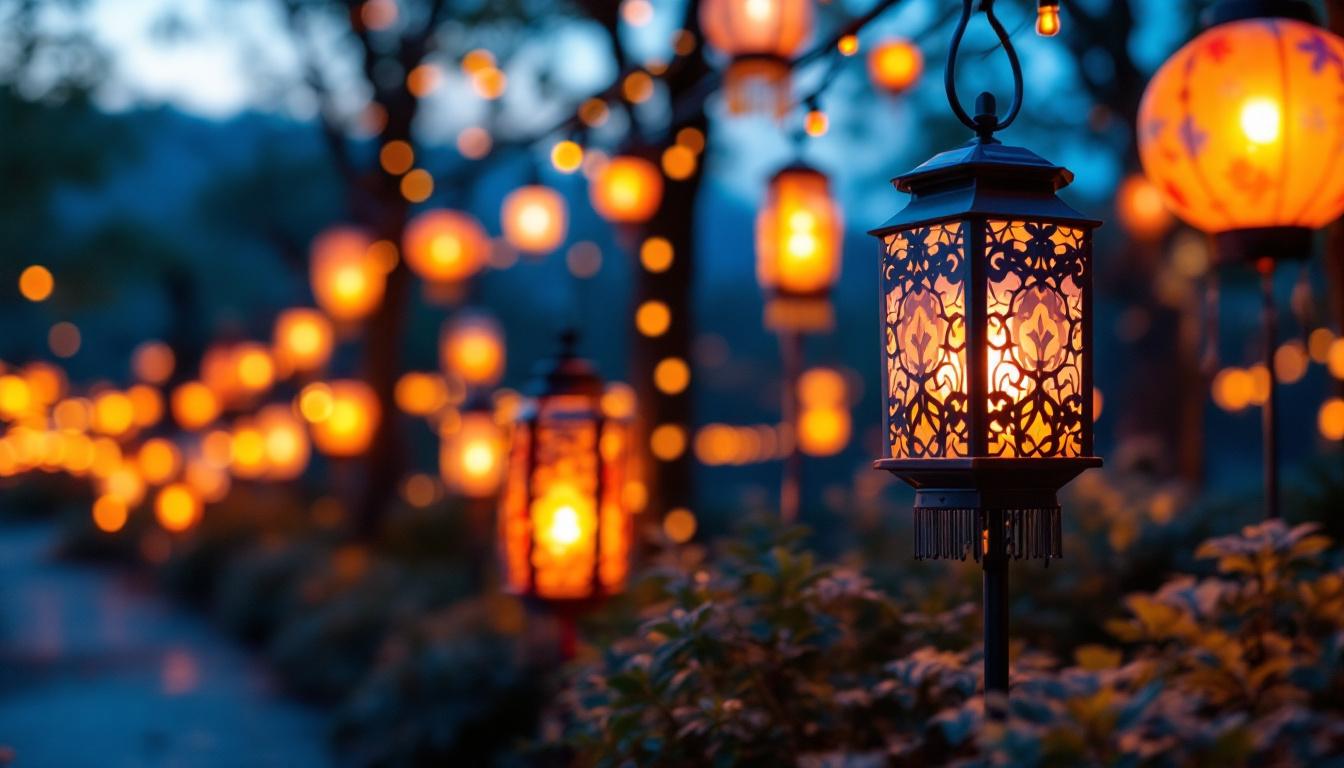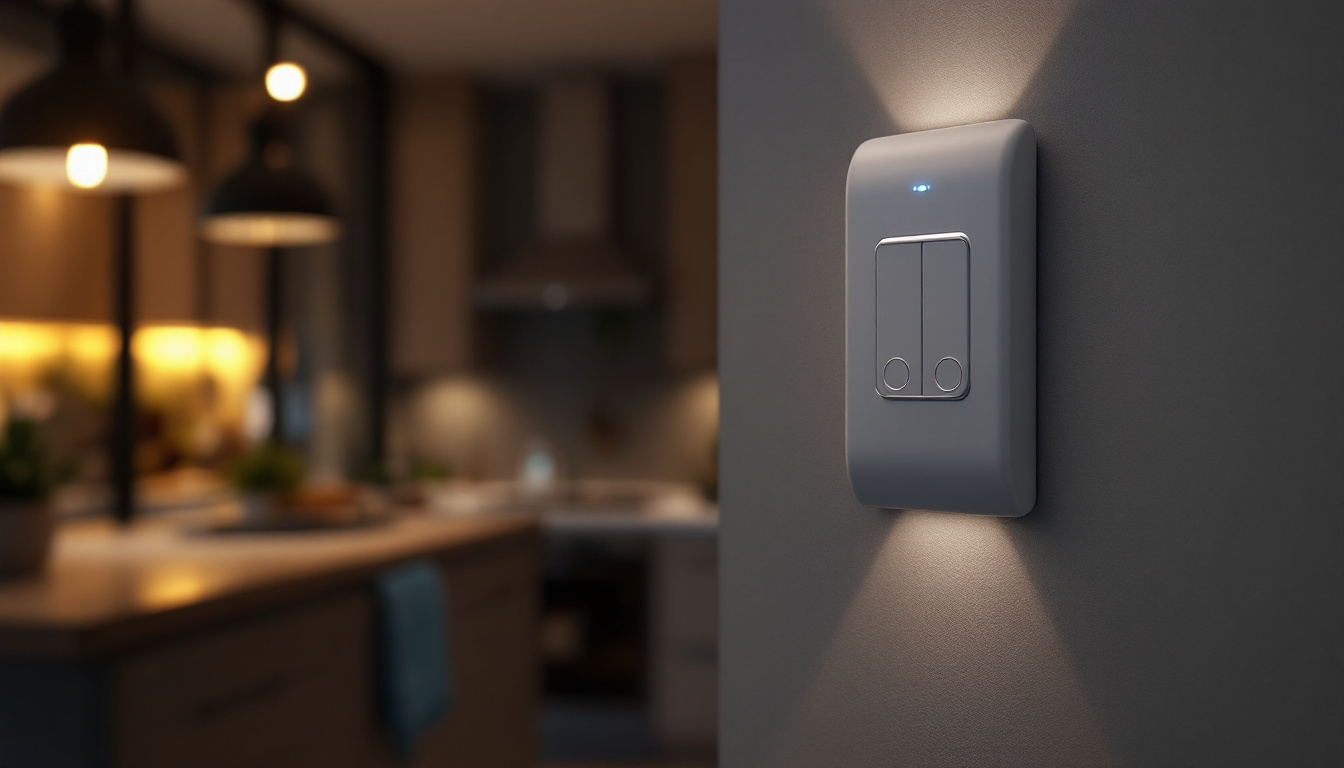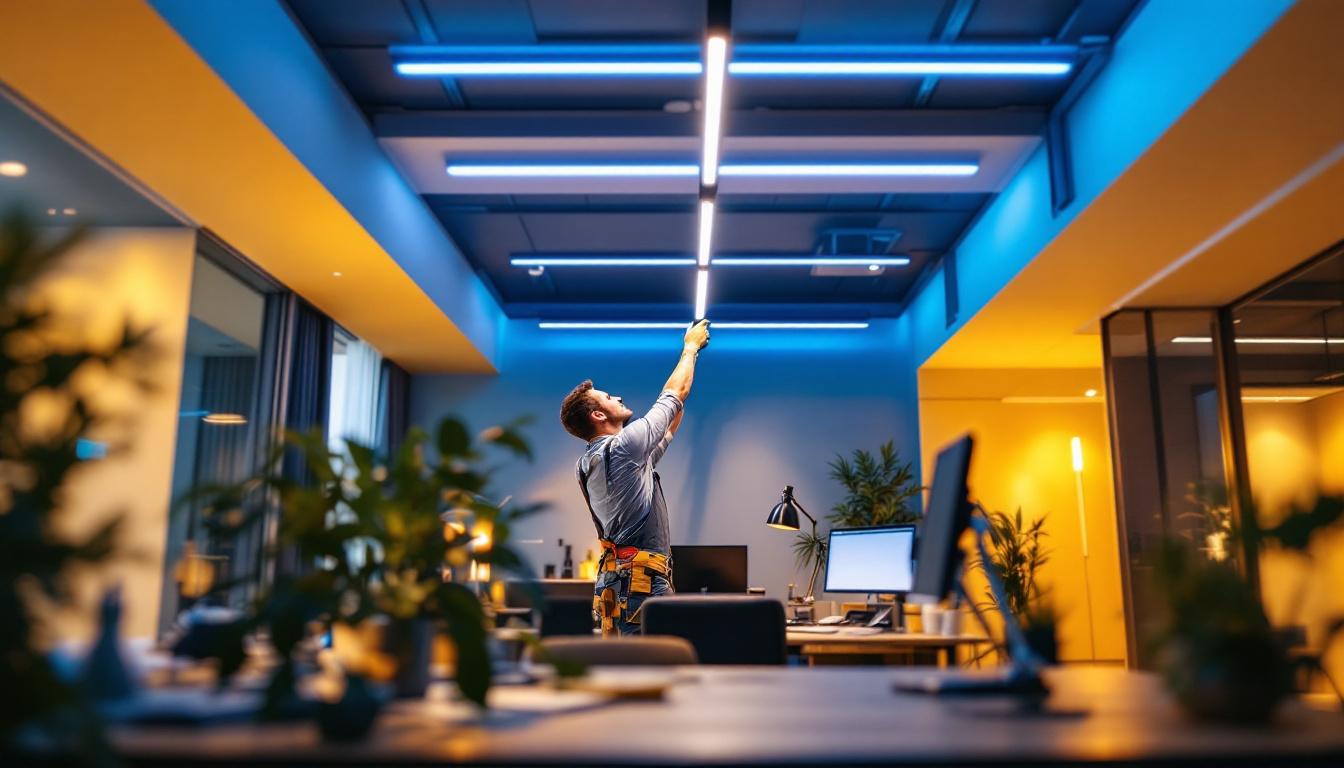
Fluorescent lighting has long been a staple in both residential and commercial environments. Understanding its mechanics, advantages, and applications can significantly enhance lighting designs. This article delves into the intricacies of fluorescent lights, shedding light on their benefits and how they can be effectively integrated into various settings.
Fluorescent lights operate on a simple yet effective principle. These lights utilize a gas-filled tube coated with phosphor, which emits light when an electric current passes through the gas. The process is efficient, producing more light per watt than traditional incandescent bulbs. This efficiency is one of the primary reasons fluorescent lights have remained popular in various applications. Additionally, they generate less heat compared to incandescent bulbs, which not only contributes to energy savings but also makes them safer to use in enclosed spaces.
At the core of fluorescent lighting is the interaction between electricity and gas. When electricity flows through the tube, it excites the mercury vapor inside, producing ultraviolet light. This ultraviolet light then interacts with the phosphor coating, converting it into visible light. This multi-step process not only enhances efficiency but also extends the lifespan of the bulb, making it a cost-effective choice for many environments. Furthermore, the design of fluorescent lights allows for a variety of color temperatures, from warm white to cool daylight, catering to different aesthetic and functional needs in both residential and commercial spaces.
Fluorescent lights come in various types, each suited for different applications. The most common types include linear fluorescent tubes, compact fluorescent lamps (CFLs), and high-intensity discharge (HID) lamps. Linear tubes are often used in commercial settings, while CFLs are popular for residential use due to their compact size and versatility. HID lamps, on the other hand, are typically used in outdoor and industrial applications, providing powerful illumination where needed. In addition to these, there are also specialty fluorescent bulbs designed for specific tasks, such as grow lights for horticulture, which emit wavelengths that promote plant growth, further showcasing the versatility of fluorescent technology in meeting diverse lighting needs.
Fluorescent lighting offers numerous benefits over traditional incandescent bulbs. These advantages make them a preferred choice for many lighting contractors and designers looking to create efficient and effective lighting solutions.
One of the most significant advantages of fluorescent lights is their energy efficiency. They consume about 75% less energy than incandescent bulbs, which translates into lower electricity bills. This efficiency is particularly beneficial in commercial settings where lighting is used extensively, leading to substantial cost savings over time. Moreover, the reduced energy consumption contributes to a smaller carbon footprint, making fluorescent lighting a more environmentally friendly option. As businesses and homeowners increasingly prioritize sustainability, the shift towards energy-efficient lighting solutions like fluorescent bulbs becomes even more critical.
Fluorescent lights have a much longer lifespan compared to traditional bulbs. While incandescent bulbs may last around 1,000 hours, fluorescent lights can last anywhere from 7,000 to 15,000 hours or more, depending on the type and usage. This longevity reduces the frequency of replacements, further contributing to cost savings and less waste. Additionally, the extended lifespan of fluorescent bulbs means that fewer resources are consumed in manufacturing and transporting replacement bulbs, which is another step towards reducing overall environmental impact. In settings like schools and hospitals, where consistent lighting is essential, the reliability of fluorescent lights is invaluable.
Fluorescent lights are available in a wide range of color temperatures, allowing for greater flexibility in design. From warm white to cool daylight, lighting designers can select the perfect hue to create the desired ambiance in a space. This variety is particularly useful in settings such as offices, retail spaces, and homes, where lighting can significantly impact mood and productivity. For instance, cooler color temperatures can enhance concentration and alertness in work environments, while warmer tones can create a cozy atmosphere in residential areas. Furthermore, advancements in fluorescent technology have led to the development of full-spectrum fluorescent bulbs, which mimic natural daylight and can be beneficial for tasks requiring accurate color rendering, such as in art studios or photography. This adaptability makes fluorescent lighting an excellent choice for diverse applications, catering to both functional and aesthetic needs.
The versatility of fluorescent lighting makes it suitable for a wide range of applications. Understanding where and how to use these lights can enhance design outcomes and improve functionality.
In commercial environments, fluorescent lighting is often the go-to choice. Its energy efficiency and long lifespan make it ideal for offices, retail stores, and warehouses. In offices, for example, fluorescent lights can provide bright, even illumination that reduces eye strain and enhances productivity. Retail spaces benefit from the ability to choose color temperatures that highlight products effectively, creating an inviting shopping atmosphere.
Fluorescent lighting has also found a place in residential settings. Compact fluorescent lamps (CFLs) are commonly used in homes due to their energy efficiency and compact size. They can be installed in various fixtures, from table lamps to ceiling lights, providing flexibility in design. Additionally, the availability of different color temperatures allows homeowners to create the desired ambiance in each room.
In industrial settings, fluorescent lighting is often used for its durability and efficiency. Factories and warehouses benefit from high-output fluorescent lights that provide bright illumination for large areas. Additionally, these lights are often designed to withstand harsher environments, making them suitable for various industrial applications.
While fluorescent lighting offers numerous advantages, it is not without its challenges. Lighting contractors must be aware of these issues to ensure successful installations and designs.
One common issue with fluorescent lights is flickering, which can be caused by faulty ballasts or poor electrical connections. This flickering can lead to discomfort and distraction, particularly in work environments. Additionally, some fluorescent lights may produce a humming noise, which can be bothersome in quiet settings. Selecting high-quality fixtures and ensuring proper installation can help mitigate these issues.
Fluorescent lights contain small amounts of mercury, which can pose environmental hazards if not disposed of properly. It is crucial for lighting contractors to educate clients on the importance of recycling fluorescent bulbs and following local regulations regarding disposal. This awareness can help reduce the environmental impact of using fluorescent lighting.
In recent years, LED lighting has gained popularity as a more energy-efficient alternative to fluorescent lights. While both options have their merits, understanding the differences can help contractors make informed decisions when designing lighting solutions.
LED lights are generally more energy-efficient than fluorescent lights, consuming up to 80% less energy than incandescent bulbs and around 50% less than fluorescent lights. This efficiency can lead to significant cost savings over time, especially in high-use areas. However, fluorescent lights still offer considerable energy savings compared to traditional options, making them a viable choice in many situations.
LED lights typically have a longer lifespan than fluorescent lights, often exceeding 25,000 hours. This longevity reduces maintenance costs and the frequency of replacements. However, fluorescent lights still offer a substantial lifespan compared to incandescent bulbs, making them a reliable option for various applications.
Both LED and fluorescent lights are available in various color temperatures, but LEDs tend to offer better color rendering capabilities. This quality is particularly important in settings where accurate color representation is crucial, such as art studios or retail environments. Lighting contractors should consider the specific needs of each application when choosing between these two options.
Successfully integrating fluorescent lighting into design requires careful planning and consideration of various factors. By understanding the unique characteristics of fluorescent lights, contractors can create effective and aesthetically pleasing lighting solutions.
Incorporating fluorescent lighting as part of a layered lighting approach can enhance the overall design. Combining ambient, task, and accent lighting allows for greater flexibility and functionality. For instance, using fluorescent lights for general illumination while incorporating LED fixtures for task lighting can create a balanced and inviting atmosphere.
Installing dimming controls can further enhance the versatility of fluorescent lighting. Dimming allows for adjustments based on the time of day, activity, or mood, providing greater control over the environment. However, it is essential to ensure that the fluorescent fixtures used are compatible with dimming systems to avoid flickering or other issues.
As sustainability becomes increasingly important in design, incorporating energy-efficient lighting solutions like fluorescent lights can contribute to greener buildings. By selecting fixtures with high energy ratings and promoting proper disposal practices, contractors can help clients achieve their sustainability goals while maintaining effective lighting designs.
While LED technology continues to advance, fluorescent lighting remains a relevant option in the lighting industry. Understanding its unique benefits and applications can help contractors make informed decisions and provide clients with effective lighting solutions.
Recent innovations in fluorescent technology have led to improved efficiency and performance. Newer fluorescent bulbs are designed to reduce flickering and humming, enhancing user comfort. Additionally, advancements in phosphor coatings have improved color rendering capabilities, making fluorescent lights more appealing for various applications.
Despite the rise of LED lighting, fluorescent lights continue to be relevant in specific applications, particularly where cost-effectiveness and energy efficiency are paramount. In environments such as warehouses, offices, and schools, the combination of affordability and performance makes fluorescent lighting a practical choice.
Fluorescent lighting offers a wealth of benefits for lighting contractors and designers. From energy efficiency to versatility in applications, understanding the mechanics and advantages of fluorescent lights can lead to better lighting designs. By considering the unique characteristics of these lights and integrating them thoughtfully into designs, contractors can create effective and sustainable lighting solutions that meet the diverse needs of their clients.
Ready to elevate your lighting designs with the efficiency and versatility of fluorescent lighting? At LumenWholesale, we offer an expansive selection of spec-grade fluorescent lights that will transform any space while keeping your costs down. Say goodbye to local distributor markups and hello to premium lighting at wholesale prices. With our commitment to quality, affordability, and convenience, you’ll enjoy free shipping on bulk orders, ensuring you get the best value for your investment. Don’t compromise on your lighting needs—choose LumenWholesale for superior products that meet the highest industry standards. Wholesale Lighting at the Best Value is just a click away.

Discover the essential tips and common pitfalls to avoid when incorporating solar-powered Chinese lanterns into your projects.

Discover how the motion detector 3-way switch is revolutionizing the lighting industry by enhancing energy efficiency, convenience, and security.

Discover how linear LED ceiling lights can boost efficiency for lighting contractors, reduce energy costs by up to 50%, and enhance project quality—learn more now!.

Discover the essential insights lighting contractors need with our comprehensive guide on 4 ft LED shop lights.